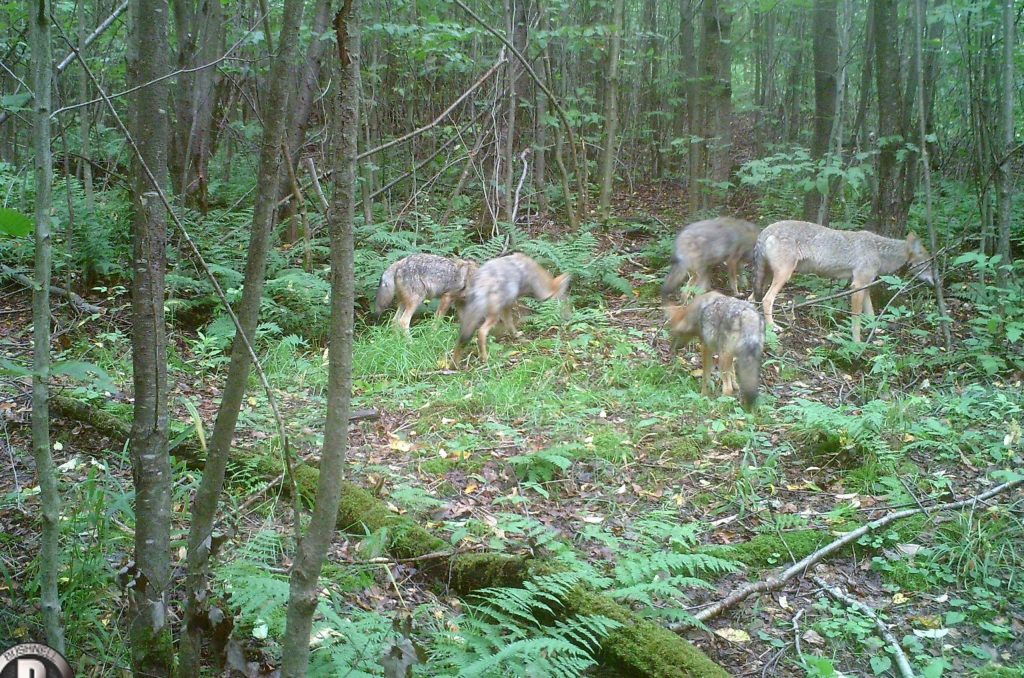Coyotes, like deer, are incredibly successful. Measured in terms of distribution, population and notoriety, both species would rank in the top ten on the Fortune 500. Unlike deer, however, coyotes are not beloved and have been prosecuted for decades for their momentous achievements.
We’ve talked a lot about coyotes on this blog – in the context of predator control, fawn predation, and what life might be like for deer without them. Everything I’ve read and learned about coyotes makes me like them even more. Coyotes, like deer, rock!
Ubiquitous and adaptive, coyotes thumb their collective noses at humans. Habitat degradation, climate change, shifting land use patterns, urbanization, no closed seasons or limits on take – the coyote response is, “Hold my beer.” While other species struggle to hang on, the coyote freely and regularly flips us the bird.
Our latest attempt to vilify the coyote occurs on the genetic front. At some point in their past, northeastern coyotes hybridized to some degree with the eastern wolf. A genetic fingerprint of this still exists in their DNA. As coyotes took North America by storm, the western colonizers and the northeastern colonizers met in New York. Recent research there looked for genetic patterns to see if the intersection of these distinct colonization events led to body size or behavioral differences that would make decedents of either of these groups more successful in different ecological circumstances.
I’ll cut to the chase. No barriers to gene flow were detected and with no special distinction existed to differentiate between those descended from northeastern coyotes and western coyotes. This is not surprising as coyotes are highly mobile and long dispersers. Did I mention how successful coyotes are as a species? I mean they colonized the entirety of North America.
The observed differences in coyote density and diet seen in New York have nothing to do with genetic differentiation or legacy effects of a few wolves that had a crush on a coyote back in the day. Impacts of coyotes in New York are therefore attributed to local abundance and ecological context. I am uncertain what is meant by impacts. Whatever they are, it’s not because their great grandma was from Wyoming and not Maine.
To this point, nothing stated in the paper shocked me. Then I got to the last line. “As a result, at a scale akin to the size of New York, coyote types are likely not sufficiently distinct or spatially aggregated to consider management prescriptions based solely on genetic heritage.”
Management prescriptions based solely on genetic heritage? Have I mentioned how successful coyotes are as a species? We have thrown the “management” book at coyotes in nearly every state to no avail so suggesting we might consider management actions on genetic heritage a possibility for a species like this is crazy.
Genetics are cool and their application to management is just beginning to be understood. However, when it comes to coyotes, searching for management actions in their genetic code is barking up the wrong tree.
Wildlife Biologist
If you would like to receive email alerts of new blog posts, subscribe here.
And Follow us on Twitter @WTDresearch
